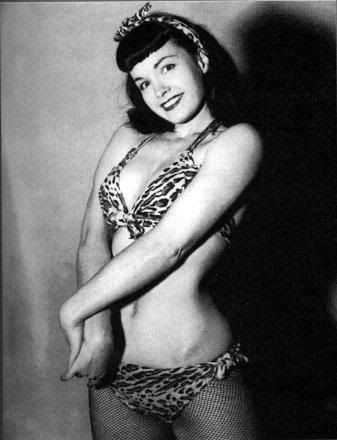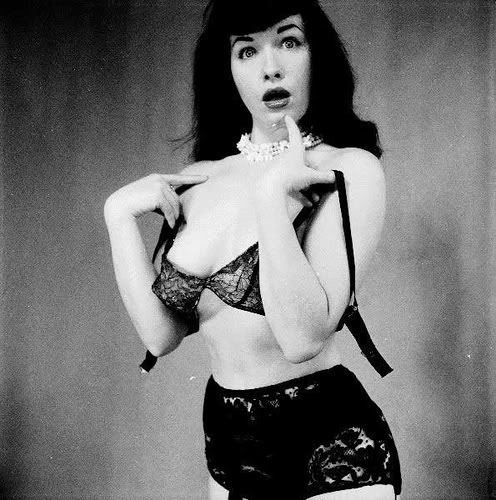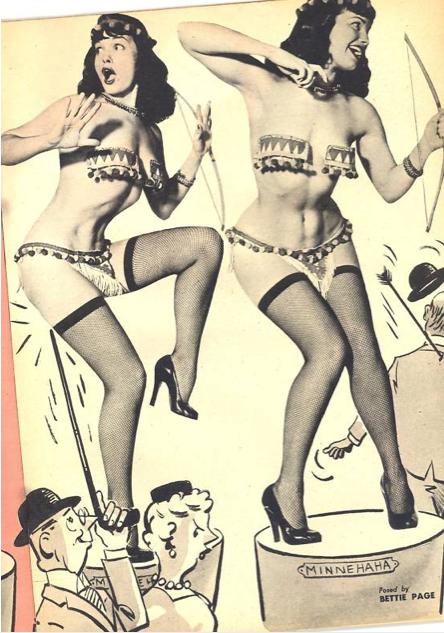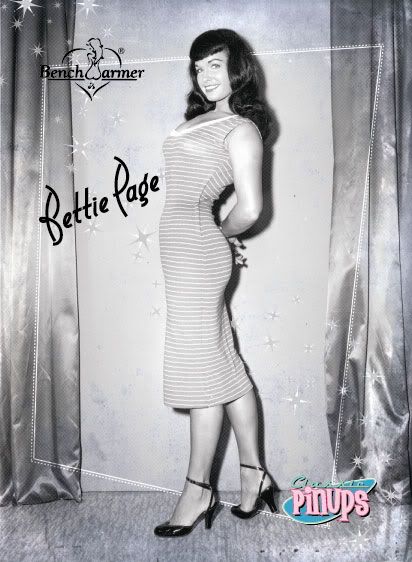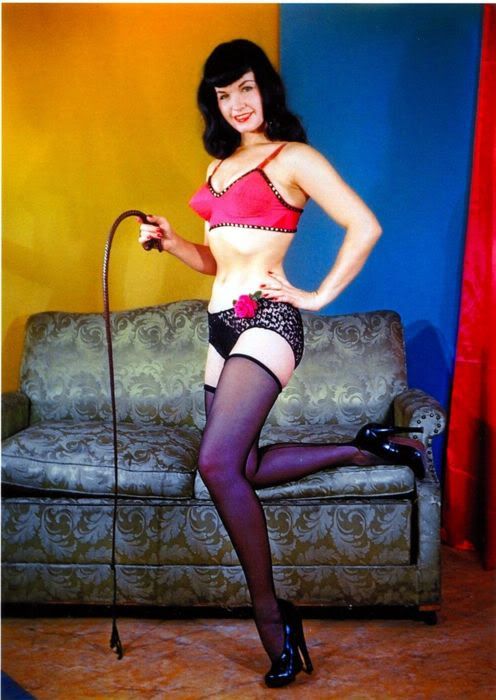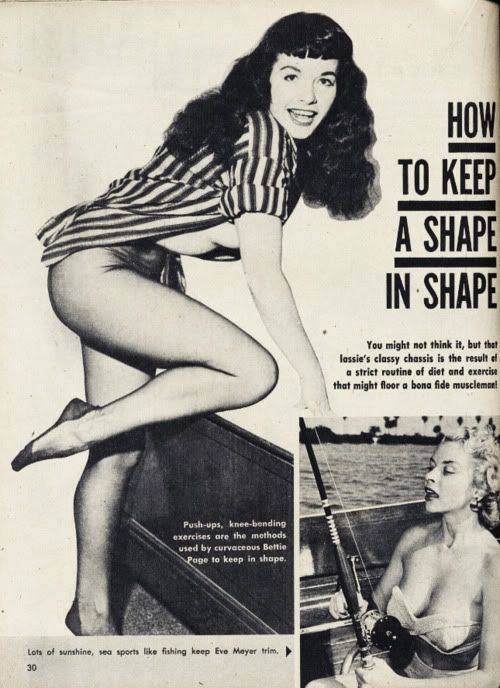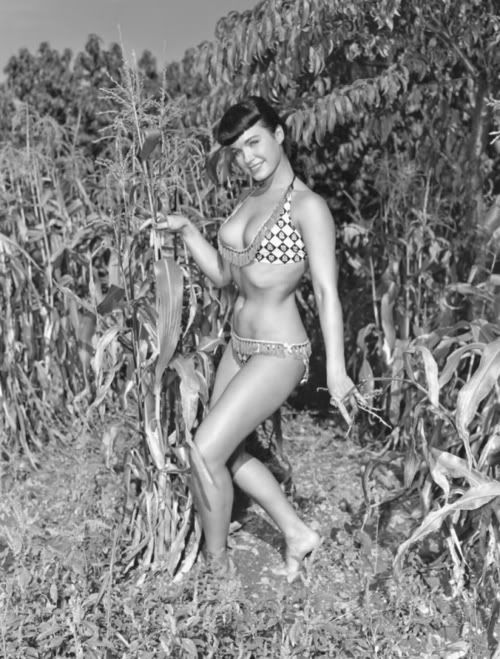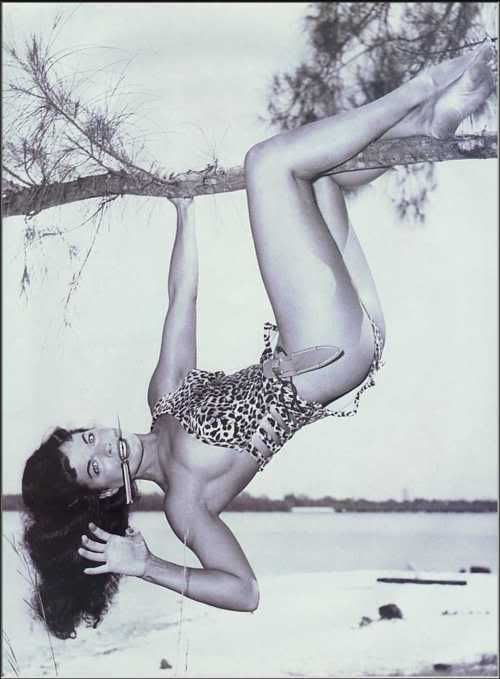Sunday, August 5, 2012
Bettie Page Photos (part 2)
Saturday, August 4, 2012
Ancient Greek Clothing For Women
Like any other period in history, fashion had changed throughout the decade and ancient Greek clothing for women was no different. Common clothing was green, grey and violet. The Himatian was a woolen cloak-like garment that became popular around the 5th century B.C.E and measured around 10 to 12 feet in length. It was originally an outdoor garment, but as the fabric became lighter through the century, it became more comfortable to wear indoors and around city. Another piece of ancient Greek clothing for women was the Peplos which was a loose fitting garment that hung in folds around the upper body, usually in the form of a shawl. They were tied together at the shoulders and further holstered in place with a girdle. Arms were left were bare. Chitons were tunics that were often made of linen and worn by all genders; the only difference was men’s chiton hung around the knees while the women’s chiton hung to the ankles. Like the peplos, the chiton could be open at the right side of the body, but could be closed as well. Amazonian women would wear this garment low with their right breast exposed so as not to interfere with sword practice. Clothing is often a symbol of wear a woman stands in society and although women faced discrimination many Greek women enjoyed certain freedoms that would be alien to women in the later centuries.
Clothing during this period was very comfortable for women and not hard or cumbersome to wear in the coming millennia. These were the basic garments that women wore all around Greece, but in some areas women would wear light veils when going to the markets or special events. Women also wore black veils over their heads during periods of mourning, an ancient Greek custom. Garments similar to the Himation and Peplos would later be seen in post revolutionary France as a way of discarding the traditional, restricting, womanly garments in favor something practical and simplistic yet elegant and sophisticated. French revolutionaries also sought to trace their idealism and rationality back to ancient Greece which explains why ancient fashions were so popular during the late 1700s and early 1800s. Overall, ancient Greek clothing for women was clothing that loose, easy to slip on and comfortable throughout the day.
Farthingales
Farthingales are hoopskirts that were fitted underneath dresses to give gowns proper definition and structure in the 15th and 16th centuries. Farthingales are the beginning of what would later become bustles and crinoline from the Victorian era. These skirt contraptions were originally a Spanish design, but was transferred to England when Catherine Aragon of Spain married Prince Arthur, son of King Henry VII of England. Royal figures were the trendsetters when it came to European fashion. Farthingales were often made of wood or wicker with the earlier versions being made of whalebone around 1580. Farthingales provided a cone shaped appearance allowing women to drape their skirts over the structure, giving women a near perfect form. Women of France and England would wear double skirting over the farthingale to reveal contrasting colors.
The French court produced the wheel Farthingale which was wide and circular around the hoop which allowed the dress to drape over in a circular pattern. This style was transported to England in the late 1570s and the great Farthingale would derive from the wheel farthingale and Queen Elizabeth I can be seen wearing the wheel style in various portraits. The great farthingale was odd in the respect that it hung low in the front while high in the back. The low cut line elongated the waist while shortening the legs in the front. The great farthingale had not survived in history, but Queen Elizabeth I can be seen wearing a style similar to the great farthingale in the 1590s. This style was popular by the late 1500s and became fashionable until the early 17th century and by this time the farthingales had become mostly restricted to court life. By the mid 1600s, however, farthingales fell out of fashion entirely.
Harlem Renaissance Fashion
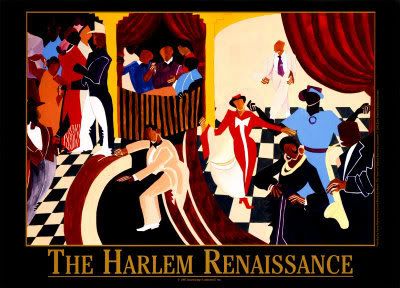
Harlem renaissance fashion was about celebrating life within the African American community. The Harlem Renaissance in general was a celebration of art, poetry and black culture. Harlem renaissance fashion took place during the 1930s at a time when many Americans were cutting back due to the depression which also lends to the uniqueness and monumental feat of the Harlem Renaissance period.
Harlem Renaissance Fashion for Men:
Suits during this period were about color and flashiness. These suits were often made of wool. Suits very much depended on the individual and came in many forms including the popular flare pants suit that was worn by mainstream society. Some coat tails of jackets were usually longer with the front end cut around the waist, similar to the tuxedo. The signature suit of the 1930s for men in the African American men was the zoot suit. Zoot suits were often baggy and were often accessorized with a matching hat, sometimes plumed with a feather. Zoot suits were often frowned upon by mainstream society since many Americans at that time were cutting back on materials and this type of attitude would extend into the next decade during the war effort. Despite this, African American men during this period should be commended for choosing to express their individuality when fashion in general had been toned down in uncertain, economic times.
Harlem Renaissance Fashion For Women:
Harlem Renaissance fashion for women was about loose fitting gowns and dresses that were suitable for dancing and party going. Dresses came without sleeves and the shoulders were bare; this was about being comfortable while out and about around town. Shoulder strap dresses were worn in public that spread far apart, revealing the upper back, neckline and collarbone. Many dresses resembled flapper dresses of the 1920s which was suitable for the lively atmosphere that came with the Harlem renaissance. Beads and rhinestones were popular accessories. Chiffon along with silk was popular garments which complemented dresses and gowns. Heeled shoes were popular as well, often open toed which was also in vogue in mainstream society as well.
Harlem renaissance fashion for both genders was about unshackling the bonds of oppression and celebrating life and literature and this type of attitude extended to fashion. African Americans had not had a chance to make large contributions to American fashion until the Harlem Renaissance period which gave them a chance to make unique contributions to the American fashion scene that would extend to later decades.
Feather Fashion

Feather fashion has reached back far in history across many cultures around the world. Feather fashion includes plumed hats and usually includes such avian feathers as ostrich or peacock. Women adorned their hats with feathers throughout the 17th, 19th and 20th centuries. Women of the early modern era were known for extensively decorating the hats all sorts of items including feathers. Feather fashion was not as popular during the Victorian era since women mostly wore bonnets during the early era, but could sometimes be trimmed with feathery trimmings. Edwardian women of the early twentieth century wore wide brimmed hats which could be decorated with feathers. During the 1920s, women wore turban-like head garments which could be decorated with peacock feathers.
Feather fashion can give any garment a fashionable edge. Feathers were usually reserved for the wealthy who had the means to purchase exotic feathers from across the world to further accentuate their clothing. Feather fashion was meant to exude a certain grandiose sense of style denoting wealth, royalty and pomp, but was also for individuality and expression of the self. Various designers use feather fashion in their clothing lines and can be seen across runway shows around the world. Feathers can be dyed in just about any color which can make a person stand out in a crowd and get noticed. Feather fashion also allows for people to get creative e not only in what headpiece they wore, but with various dresses that can be tailored according to a designer’s imagination.
SS Uniforms
Even the Nazis had their own sense of fashion when it came to denoting rank and exuding a sense of authority and SS uniforms were no different. Heinrich Himmler, leader of the SS, stated that the black uniforms were meant to show fear, respect and command. SS uniforms drew back on the white, red and black ensemble since those colors were popular during the Germanic, imperial days. Prussian cavalry and elite guardsmen wore the famous skull and bones insignia and black uniforms that the Nazis would later adopt. Black also came to symbolize fascism since Benito Mussolini’s top enforcers were known as the black shirts before Hitler’s regime came to power.
The SS began as part of the Nazi storm troopers, or brown shirts, during the 1920s. They were solely loyal to Hitler and were the main enforcers for displacing Jews and sending them to death camps. SS uniforms started out as brown, but by 1932, SS uniforms were changed to black. A German factory that would later become Hugo Boss produced SS uniforms with forced labor. The black SS uniforms became mostly for the political wing of the SS while the military wing wore clothing that was more suitable for warfare. The new SS ensemble included, black breeches, knee-high boots and red armbands with the Nazi insignia. They also wore stylish, peaked caps and a black greatcoat issued to SS members for cold weather. Brown shirts were retained as a nod to the brown shirts. The reason many young men wanted to join the Nazi army was because of the stylish uniforms that commanded respect, fear and authority. Some high ranking officers even received motorcycles as reward for their ranks.
SS uniforms appealed to young, German men who not only wanted to serve the state, but also wanted to look stylish as well. However, it was not easy to get into the SS, especially since its inception. Those who wanted to join had to prove their German ancestry going back to 1750 and had to prove there was no Jewish ancestry in their family backgrounds; however, the rules became more lax since many members found it difficult to prove their ancestry so extensively. SS members had to look the physical part in order to blend well with the SS uniforms; blond hair and blue eyes were preferred, but young men who were generally fit were also encouraged to join.
Ancient Egyptian Fashion
Among scholars, there is some debate regarding ancient Egyptian fashion as to whether or not women were bare breasted when wearing a simple sheath dress. These garments were rectangular in nature, folded once and sewn down the edges that formed a tube. These sheath dresses would run down to the ankles and either below or above the breast area. This type of dress was worn through the Old, Middle and New Kingdoms. There is also some debate as to the function of the shoulder straps, some believe the snugness of the sheath dress was enough to hold the garment in place; others believed the shoulder straps were wide enough to cover the breasts. Ancient Egyptian fashion was not so kind when it came to female slaves who wore simple loin cloths. Children were usually wire wrapped cloths during winter. Materials were mostly linen or wool. Shoes were in the form of sandals that were either held together by another strip of leather or papyrus. Full shoes would not appear until the New Kingdom when other cultures would come to influence Egypt. Jewelry was often large and gaudy, usually made of carnelian or lapis. The rich loved wigs. Being without a wig meant you could not afford one. The most expensive wigs were made of real human hair with others being made of wool. They were twisted, braided and adorned with all sorts of jewels. Ox tallow and scented beeswax were great for not only scenting wigs, but made great perfume as well.
By the New Kingdom, both men and women could wear a two piece robe made of rectangular cloths of four by feet. These two pieces would be sewn together at the narrow ends to leave space for the neck. Women would bunch together the bottom, bring them to the front and tie them under the breasts. This garment would be the basic outline of Ancient Egyptian fashion and could be further adorned with other things like vertical pleats which were popular at the time. Shawls were also popular during the New Kingdom. Shawls were made of pleated material. Pleated capes and sashes were often tied around the front waist area and hung just above the floor. Shawls, capes and sashes were usually reserved for the upper classes. Kohl was used as eyeliner to protect the eyes from the sun with women using red ochre to color the lips and cheeks.






